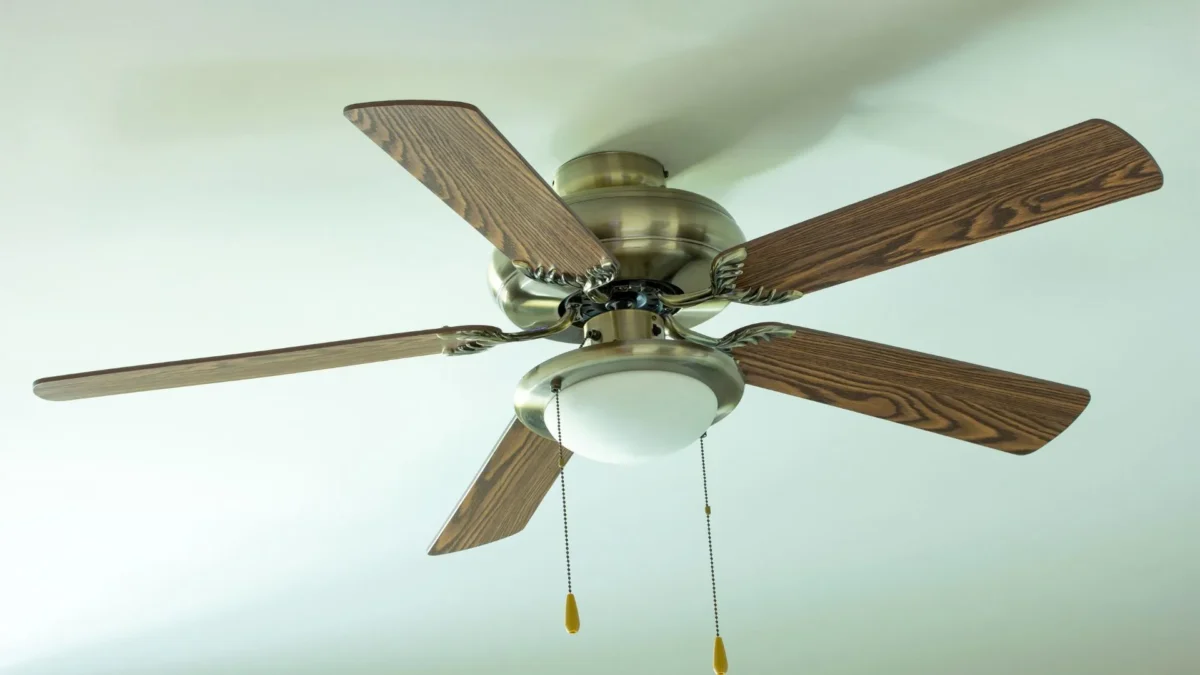When it comes to ceiling fans, the motor is the heart of the appliance—it determines airflow, energy efficiency, and durability. If you’ve ever wondered which type of motor is used in ceiling fans, the short answer is:
👉 Most ceiling fans use a single-phase induction motor, but modern fans increasingly use BLDC motors for energy efficiency.
The Motor Used in Ceiling Fans
A single-phase induction motor is the standard motor used in ceiling fans. It works on the principle of electromagnetic induction, where alternating current (AC) generates a magnetic field that rotates the fan blades.
🔹 Key takeaway: Traditional ceiling fans run on induction motors, while newer energy-saving models use BLDC motors.
Types of Motors in Ceiling Fans
Let’s look at the main types of motors used in ceiling fans and how they work.
1. Single-Phase Induction Motor
- Most widely used in ceiling fans across households.
- Runs on 220–240V AC supply.
- Contains a stator (stationary part) and a rotor (rotating part).
- Uses a capacitor to create the phase shift needed for rotation.
- Affordable, durable, and reliable, but consumes more power than newer motors.
Snippet summary: Induction motors are the traditional choice in ceiling fans—affordable, robust, and easy to maintain.
2. Permanent Split Capacitor (PSC) Motor
- A variant of induction motor with a permanently connected capacitor.
- Ensures smoother and quieter performance.
- Common in mid-range ceiling fans.
- Slightly more efficient than standard induction motors.
Read More: https://www.jivah.com/which-capacitor-is-used-in-a-ceiling-fan/
3. BLDC Motor (Brushless Direct Current)
- Runs on direct current (DC) but uses an in-built driver to work with household AC supply.
- Consumes up to 65% less electricity compared to induction fans.
- Operates silently with minimal heat generation.
- Offers remote control, IoT, and smart home integration.
- Higher upfront cost, but big savings in the long run.
Snippet summary: BLDC motors are the future of ceiling fans—ultra-efficient, silent, and smart.
Induction Motor vs. BLDC Motor
Here’s a quick comparison to help you decide which motor suits your needs best:
| Feature | Induction Motor | BLDC Motor |
|---|---|---|
| Power Consumption | 70–80W | 25–35W |
| Noise Level | Moderate | Very Low |
| Air Delivery | Good | Excellent |
| Durability | High | High |
| Smart Features | Rare | Common |
| Cost | Affordable | Higher upfront, saves later |
Key takeaway: Induction motors are budget-friendly and reliable, but BLDC motors save power and offer modern features.
Why Induction Motors Are Still Popular
Even with BLDC technology available, induction motors dominate the market. Here’s why:
- Affordable pricing makes them accessible to everyone.
- Simple maintenance and easy availability of spare parts.
- Stable performance even during voltage fluctuations.
- Proven track record of decades in Indian households.
How Motor Choice Impacts Your Electricity Bill
- A standard induction ceiling fan consumes around 75 watts per hour.
- A BLDC ceiling fan consumes only 28–35 watts per hour.
- If you use fans for 12 hours a day, BLDC can save ₹1,500–2,000 annually per fan on electricity bills.
Snippet summary: Switching to BLDC fans reduces electricity consumption by more than half—ideal for long-term savings.
Why Choose Jivah for Ceiling Fans?
At Jivah Electricals, we combine trusted induction motor technology with the latest BLDC innovations. Our ceiling fans are built to deliver comfort, style, and savings.
With Jivah fans, you get:
- Superior airflow for maximum cooling.
- Up to 65% energy savings with BLDC models.
- Silent operation for peaceful environments.
- Durable motors designed for Indian conditions.
- Stylish designs that match every home interior.
Final Thoughts
So, which type of motor is used in ceiling fans?
- Traditionally: single-phase induction motor.
- Modern energy-saving fans: BLDC motor.
Both have their advantages, but if you want long-term savings, quieter performance, and smart features, BLDC is the clear winner.
👉 Upgrade today with Jivah Electricals—where innovation meets reliability. Explore our ceiling fan range and bring home comfort that lasts.



